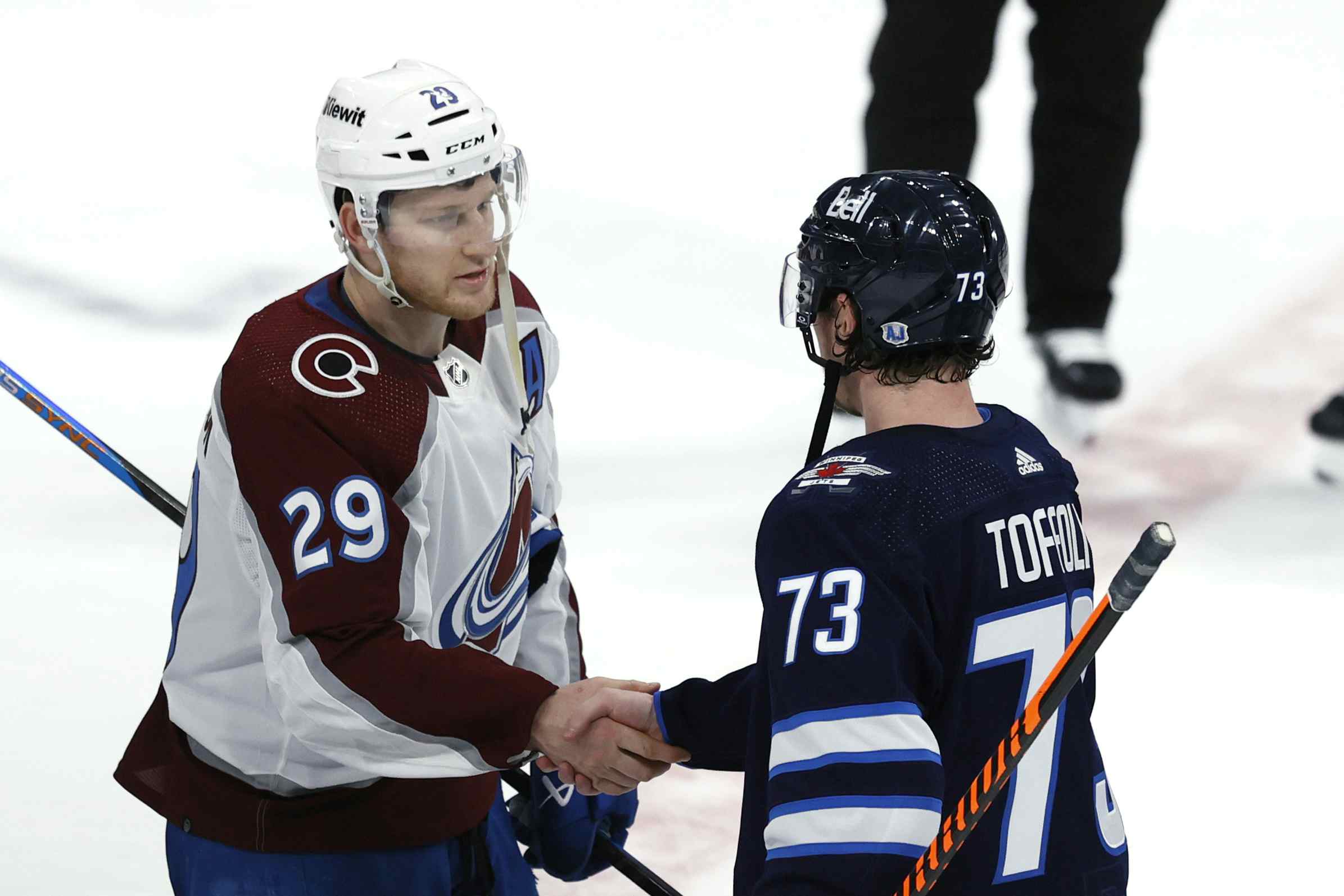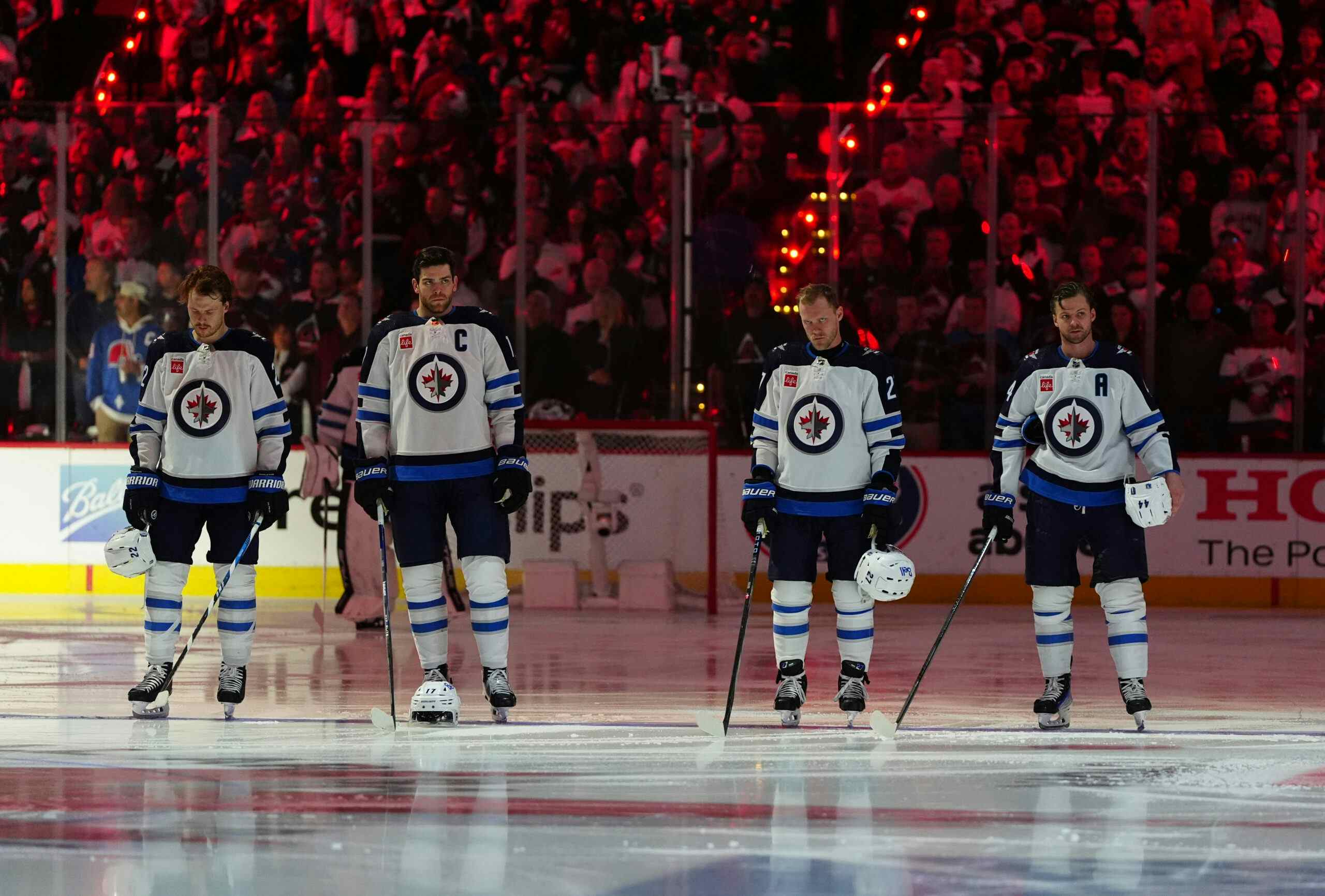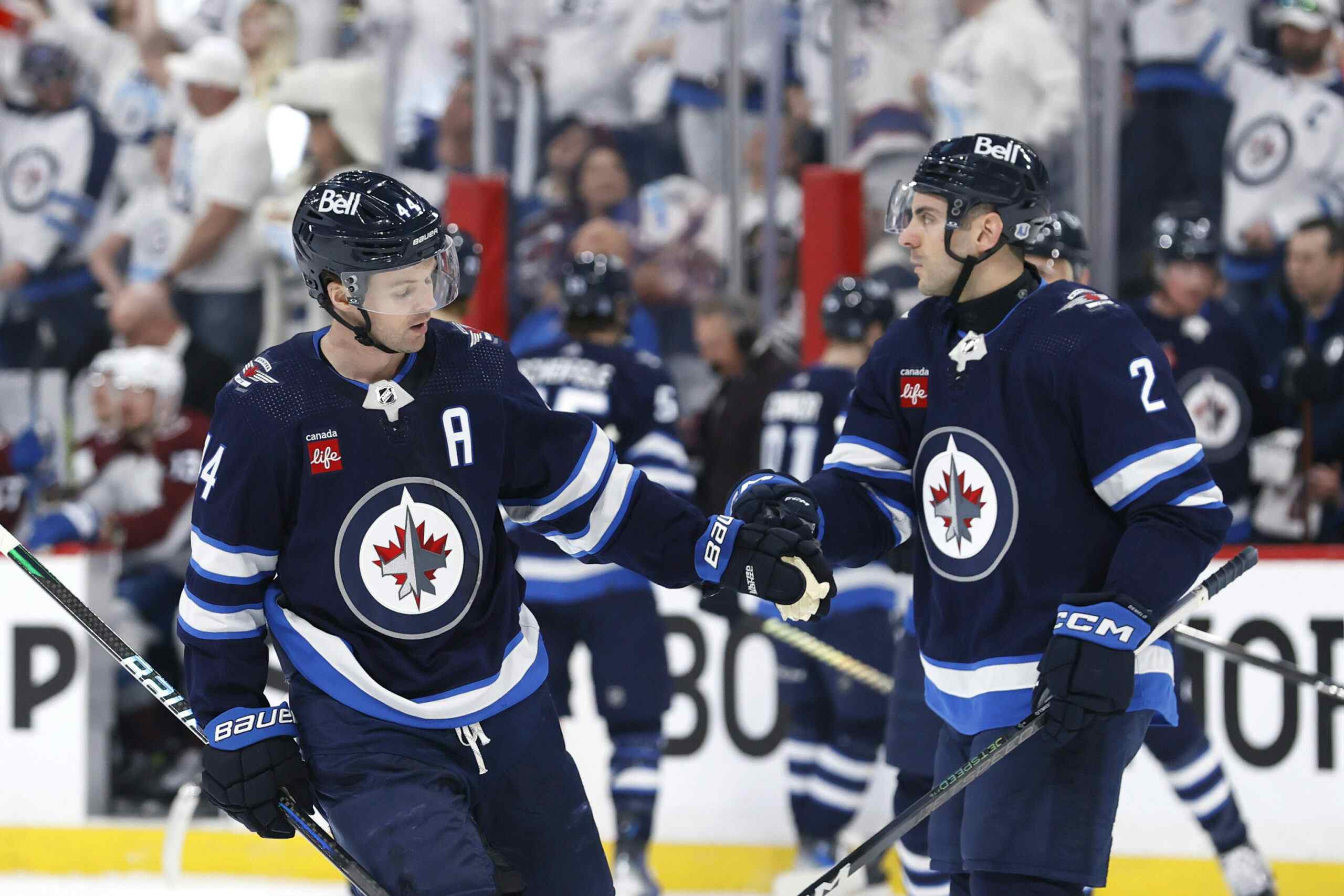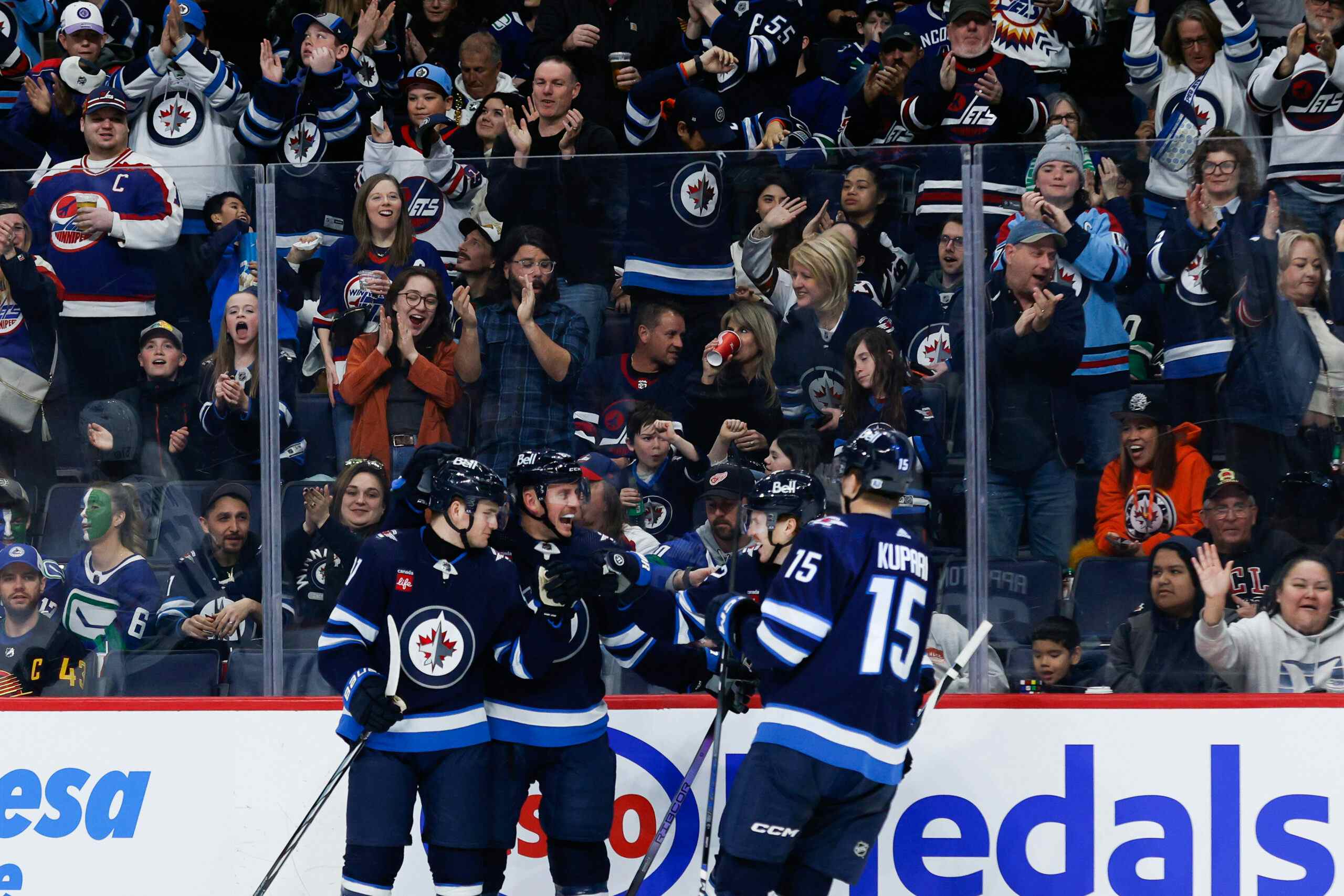Jets Forward Usage: Year in Review

As we move into the off-season, questions about personnel abound. Who should come back? Who should be traded?
These basic questions hinge on who is driving the play of the Jets, and it may not be who we expect. Inside we’ll look at how the coaches used the Jets’ forwards and how they managed under the circumstances.
The Chart

Simple stuff – Orange bubble is more shot attempts (corsi) against, blue is more shot attempts (corsi) for. Bigger the bubble, bigger the number. Up/Down is the toughness of the competition (Little faced Toews, Peluso faced other guys like Peluso). Right/Left are the zone starts. O’Dell started often in the offensive zone, Jim Slater started in his own end a lot.
The Stars
The stars on this team are obvious. Little, Ladd, Frolik, Wheeler, and Kane (he’s the giant blue circle behind Wheeler) played the toughest competition and controlled the flow of play.
- Bryan Little never gets the respect he deserves, despite another season against other team’s best players without an offensive push and delivering. He’s a legitimate 1st line, 2-way centre. His 64 points in 82 games puts him 15th in the NHL among centres, and in Jason Spezza/Patrice Bergeron territory for scoring.
- Meanwhile, the supposed problem child Evander Kane finished with a 53 point pace despite fighting through injury and suffering the lowest shooting percentage of his career – converting at just 7.6%. He dominated possession and shot metrics relative to his teammates and did so against other team’s second lines.
- Michael Frolik was a tremendous addition. But he wasn’t a superhero. When he was with Halischuk and Scheifele, things didn’t look quite as rosy.
- Blake Wheeler struggled early this year, and it was well documented (though poorly dissected). His final numbers are positive and speak to his recovery as the year wore on. A little easier assignment helped, and we see his zone starts move toward the offensive and his competition drop below Frolik’s.
- Oh Captain, my Captain.
The Next Group
Setoguchi, Jokinen, and Scheifele made the best of some bad situations.
- We know Seto played his off-wing, played with Thorburn and Byfuglien, and can see he started in his own zone a lot compared to his teammates. A small corsi deficit makes some sense. We can all wish things had gone a little smoother, that he’d potted a couple more goals, and been posterized a few less times. It was a forgettable season, but nothing like the horror of Antti Miettinen last season (who, we may remember, was given every push available from the coach). In fact, earlier in the year, Seto was a positive corsi player against the toughest competition. Everything was going except the scoring. Noel was never a fan of possession metrics and eventually put him in the press box for his efforts. I can’t imagine a more poorly handled player.
- Scheifele, meanwhile, had a brutal start before putting it together around December. The whispers turned to full-on discussion of whether he should be in the AHL before he quieted critics with that slick wrister and some chemistry with Kane. Injury robbed him of a finish to a season that was trending upward. Good doesn’t erase bad, but we watched the development on our TVs this year and it’s hard not to call this season a success for the first-time pro.
- Olli Jokinen played de facto third line checker, and did as well as we might expect. He got some help from Frolik for a while. He got a push when Scheifele was ineffective early and injured later. But he also had Halischuk and Throburn and Byfuglien and started in his own end often. A solid season by the veteran according to these numbers. Was it $4.5M and alienate Burmistrov good? Well…
Off the Cliff
I feel like a broken record sometimes, so you don’t have to tell me. The problem with this team is as obvious by eye as it is by these numbers. When the team didn’t have someone from the top-5 group on the ice, things went bad in a hurry.
- Thorburn played other 4th lines a year ago and was still a minus player in terms of possession. He didn’t earn an elevation on the depth chart with his on-ice work, and the team got buried because of his added minutes. That orange circle might as well be a black hole. Maybe it has size
- That big orange circle for James Wright reflects significant improvement from last year. When we look at successful teams, the fourth line either gets the puck in the right end and generates momentum (like Boston) or scores (like Anaheim, where their lowest scoring line managed 38 goals). It’s curious that this team has spent two seasons on Wright with the hope that he can become a PK specialist and goal-neutral checker. He’s not there yet, by the way.
- When training camp opened, I argued the hole in the top-9 had a few options. Andrew Gordon was the favourite to my mind as a formerly successful bottom-6 player in Washington. In-house options like Klingberg, Telegin, or O’Dell seemed plausible. Instead, a few early fast-breaks on the penalty kill earned Halischuk an extended look with Scheiefele and Frolik and the team gave up chances against and ultimately wins. His promotion over other options was a failure of analysis by the coaches. A fine bet by GMKC at league minimum, but not a solution and that was obvious long before the injury.
- Jim Slater is an interesting case. He wins faceoffs and the team originally wanted him as a PK guy. But the PK improved last year when Little, Ladd, and Kane took prominent roles. Frolik was another strong option this year. We might forgive his negative corsi given his defensive assignment, except that he faced the 11th toughest competition among forwards. If the coach can’t put him out for a defensive draw against the other team’s scoring lines (and opts for Little, Scheifele, or Jokinen instead), then what is his purpose?
- Eric O’Dell looks perfectly positioned to succeed on this chart – offensive minutes, easy assignments. But we know that he shared his ice time with also-rans and stick optional types. Hard to produce from there, even if you are in the offensive zone.
- Peluso is not an NHL hockey player. We can want him for his fists and those outrageously awkward interviews, but he only faced other fourth lines and his numbers are those of a by-stander. Or a landslide victim.
What’s It All Mean?
As we talked about last year, there is a massive divide between the have’s and have-not’s on this club at forward. We can see the divide in how Frolik and Setoguchi swapped places between December and the end of the season. Frolik promoted up the roster had his bubble turn from orange (negative) to blue (positive). Seto fell to the Frankenstein line for the Eastern conference road swing to open December, and his bubble goes the other way.
The problem isn’t Kane or Little or anyone at the top of the order. The problem is that the team has 20+ minutes of each game taken up by skaters who can’t keep up with even the equivalent players on other squads. We can hope 2014/15 is different.
Recent articles from Kevin McCartney





